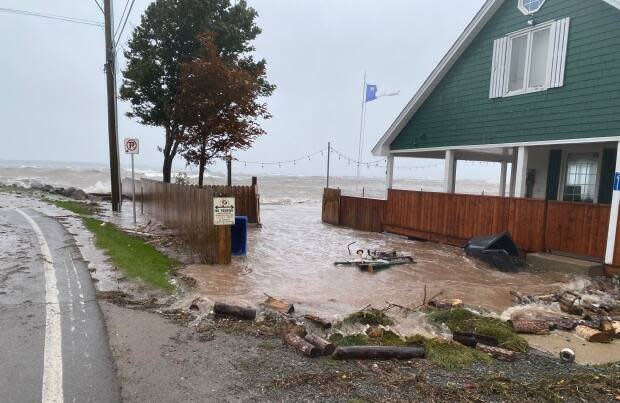Hurricane Fiona, wildfires show how Atlantic Canada is especially vulnerable to climate change

The wildfires and destructive winds in Atlantic Canada in the last nine months are just the tip of the iceberg, but there is still something that can be done, according to a New Brunswick climate group.
Sabine Dietz, executive director of Sackville-based CLIMAtlantic Inc., said the destruction caused by post-tropical storm Fiona last fall, and this spring's wildfires pushing people out of their homes, illustrate what's to come.
"We're more vulnerable to hurricanes. Hurricanes don't happen in the Prairie provinces," she said. "We're particularly vulnerable because we're low-lying coastline."
And according to a United Nations report last year, Atlantic Canada will be one of the hardest hit regions in the world by climate change in the years to come.

This year, record-breaking fires burned tens of thousands of hectares in Atlantic region and almost three million hectares countrywide. Federal Natural Resources Minister Jonathan Wilkinson is projecting that number will double by 2050, with experts pointing to climate change as the main cause.
Dietz said wildfires and hurricanes also compound each other. "There was just more debris down, there were more things that could catch fire," she said.
How can one person have an impact?
Dietz said climate adaptation, carbon emission controls and behaviour changes can make a difference.
"We've got to start thinking about where we put our communities, where we put our structures, where we allow building — to make sure that, going forward, we don't actually put more people at risk than we already doing currently," she said.

She said the list includes building farther away from the coast, stopping development in wetlands, installing air conditioning to cope with more extreme temperatures, collecting rainwater to avoid depleting groundwater, driving less, growing your own food, or buying local, and buying fewer things.
She said researchers found Fiona hit softwoods especially hard, which currently dominate plantations. Dietz said the forestry sector can protect itself with more diverse planting.
"We've changed ... what kind of trees we plant," she said. "We focused, as in the forestry industry, on the money tree. So the trees that make money, not the trees that increase the resiliency of the forest."
Dietz said another role the individual can play has to do with systemic changes, which people have the power to influence.
"When we're called to vote for people ... whether it's municipal elections, provincial elections or federal elections ... that trickles up into the global sphere," she said. "That is how we have an impact on global change."
When thinking about climate change, Dietz said many people don't know where to start. She said it's important to be realistic about what we can change and what we can adapt to, because it's too late to reverse course.
"We are locked into this ... sea-level rise. We know this is not going to stop even if we stop greenhouse gas emissions tomorrow," she said.
"The overall change in the climate, the kind of extremes that we see, we're locked into this to a certain degree."


